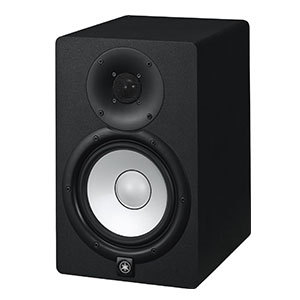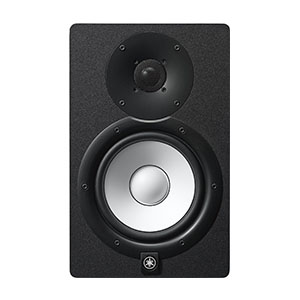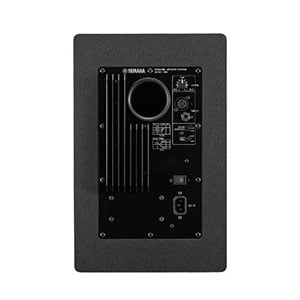- Home
- Instruments
- Gear
- Recording
- Lessons
- Reviews
- Blog


| Controls: |  |
| Features: |  |
| Performance: |  |
Yamaha's HS series of speakers has become somewhat of a legend by now. Many producers, both enthusiast and professionals hold these in high regard. Today we are going to look at Yamaha HS8 and see why it is one of the best monitors to get under $1000 at the moment.

If you are familiar with HS series, you probably know that they look pretty minimalist. This also happens to be one of the bigger reasons why so many people love them. We have a bulletproof MDF cabinet covered in black vinyl. Front side of the speaker reveals a very clean baffle with minimalist driver surround at the bottom, and a similarly non-dramatic waveguide around the tweeter.
One of the more interesting details about HS series is the color of the low frequency driver. If you get them in black, the driver cone is going to be white, while the alternative is an all white theme. This contrast was particularly interesting at the time when HS series first hit the market. Overall, you can expect these speakers to fit into just about any studio design from the aesthetic point of view.

Looking at the hardware, one thing becomes immediately clear. With a 8″ low frequency driver, you just know there will be plenty of low end to go around. On top of that unit, we have a 1″ tweeter sitting in a subtle yet efficient waveguide. Yamaha has chosen to make these bi-amped, giving us some 120 Watts per cabinet. The back panel is where all of the controls and I/O ports are located, much like on other models in this segment.
In terms of former, we have Room Control as well as HF trim switches. When it comes to connectivity, there are XLR ports combined with phone ports. Compared to most of its direct competition, Yamaha HS8's I/O options fall short, however the essentials are still there. Lastly, we have the finely tuned bass reflex ports in the back.
Performance is undoubtedly the main reason why HS8 is so popular. We are looking at a reasonably affordable set of monitors with 8″ LF drivers that offer a rather flat response. The oscillations don't really go over +-5dB from 40Hz onward. That is pretty impressive on its own. What is also great is the fact that HS8 is actually digging fairly deep into the range. You can expect massive but articulated bass that is easy to work with and pretty revealing. Mids are tight and come across as organic, while trebles are the right kind of sharp.
Combine that with plenty of volume and limited but effective Room Acoustic controls, and you have a proper monitoring solution. As it is often the case with rear firing ports, you will have to be careful when positioning the speakers against a wall. Especially considering the massive low end on HS8.
Yamaha HS8 is a no-nonsense solution for budget oriented producers who need a reliable set of monitors. For what you're asked to invest, you get a whole lot of performance and control. We can see a pair of HS8 working pretty well even in studios that are larger in nature.
For more info about the Yamaha HS8, click here.
For more studio monitor under $1000 you might like, click here.

Don says
Couldn’t agree more. These are some truly wonderful monitors.
The excel in all the areas that matter at a very attractive price point. You can pay alot more to get alot less.